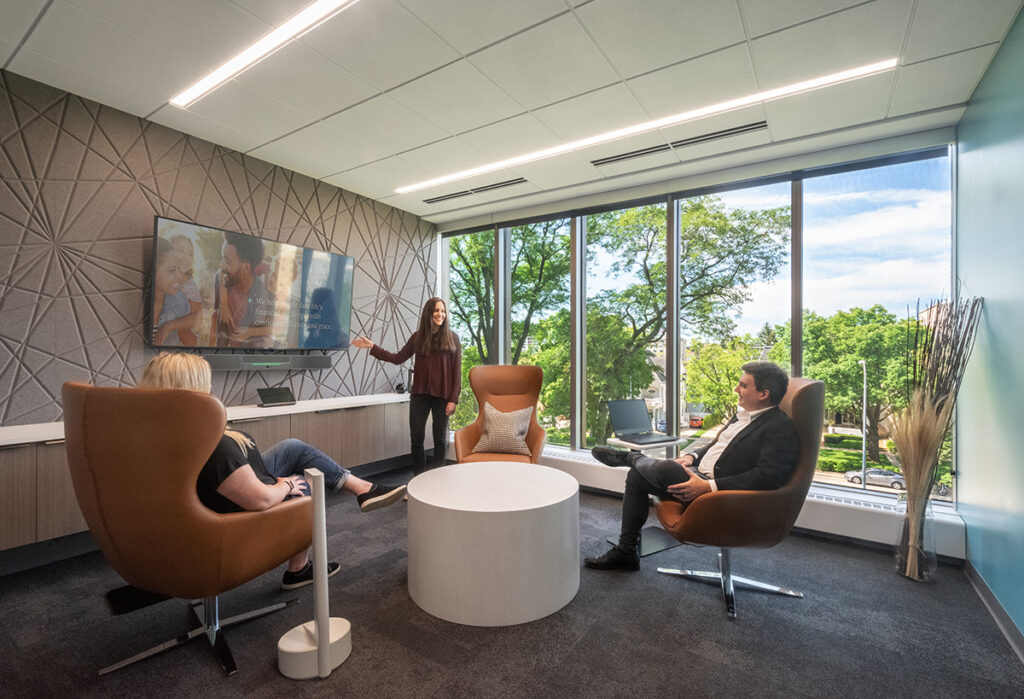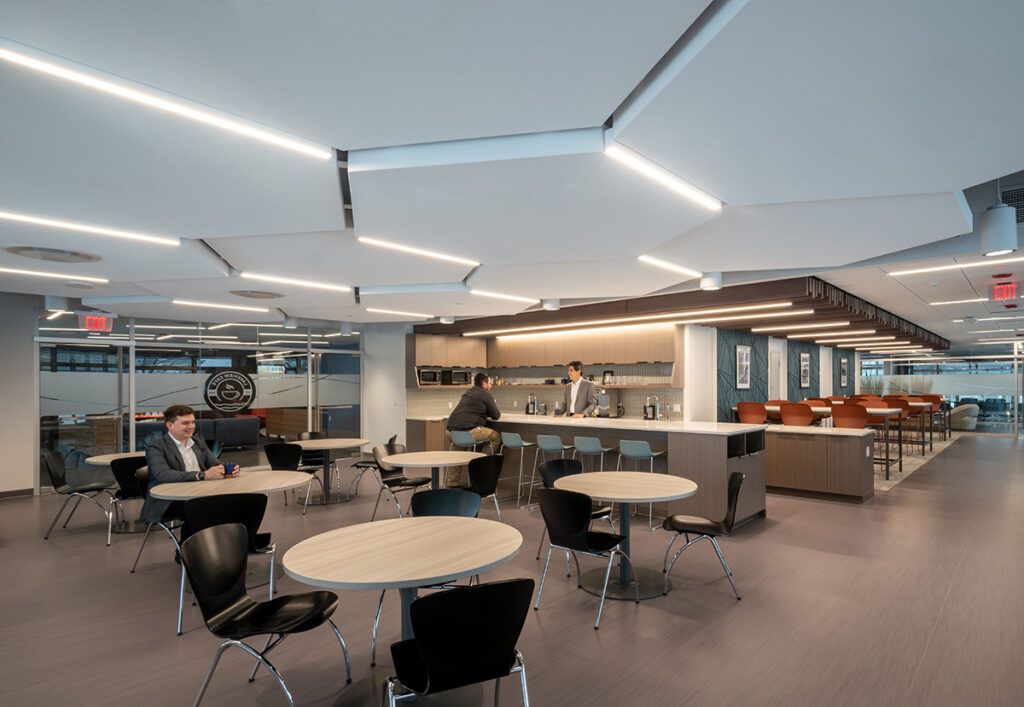Objective:
A New Home
Habitat for Humanity Dane County (HFHDC) had outgrown their previous space, finding themselves constrained by inadequate space to efficiently carry out their operations and meet the growing demands of their mission. The HFHDC Central Campus project aimed to consolidate the organizations essential functions, enhance organizational efficiency, increase sustainability efforts, and foster the Dane County community. They sought a location that was close to where customers were familiar with yet spacious enough to accommodate the growth of both the administrative operations and the ReStore location.
When the recently vacated Odana Road Antique Mall became available, HFHDC saw it as an ideal solution to their current and future requirements. The newly refurbished 45,000 SF central campus now serves as a singular hub for the community, housing HFHDC’s administrative offices, versatile community, and educational spaces, an expanded ReStore West location, and ReStore warehouse – all united under the same roof for the first time. This transformative project resonates with HFHDC’s core mission of providing affordable housing solutions and empowering families towards stability and self-reliance.

SOLUTION:
Open & Flexible Space
Thoughtful planning and space division were essential project components to maximize the building’s programming and create an open, easy-to-navigate environment. HFHDC’s office and meeting occupy the western section of the building, strategically positioned to benefit from the newly installed windows that flood the space with natural light. This not only enhances staff productivity and well-being but also exemplifies Habitat for Humanity’s commitment to transparency and accessibility for visiting families.
Beyond serving as administrative spaces, this multifunctional facility doubles as a dynamic training hub for volunteers and new homeowners alike. Flexible-use areas, such as the breakroom, seamlessly merge with the expansive training room, ensuring fluidity in space utilization. The design incorporates an overhead garage door, enabling these areas to transition effortlessly between large communal settings and intimate meeting spaces, highlighting the facility’s adaptability.
Private offices were thoughtfully designed to serve dual purposes, seamlessly transforming into meeting rooms when not in use by flexible work-from-home personnel. Moreover, a family-centric conference room includes a dedicated breakout space catering specifically to children, ensuring inclusivity and comfort for all.

The Habitat Story
The design solution for the overall space is a balance of form and functionality with an emphasis on affordability. Strategic pops of Habitat’s bright, welcoming colors were incorporated through the store and office to create an inclusive and inviting atmosphere. The design team focused on reusing materials and integrating secondhand items from the ReStore was not only more affordable for Habitat, but also embedded the mission, sense of history, and community within the space. Incorporating thoughtful design elements such as thematic vinyl cutouts and utilizing the exterior wall of a home as 3D wall art, Habitat for Humanity vividly illustrates the journey of homeownership and construction. Keys, nails, and hard hats are creatively employed as vinyl wall art, providing a cost-effective yet artistic portrayal of Habitat’s narrative. These imaginative touches not only elevate the visual allure of the space but also serve as constant reminders of the organization’s unwavering mission and values.
Diversity, Equity, and Inclusion
Beyond the physical spaces, the project embodies HFHDC’s commitment to Diversity, Equity, and Inclusion. Consolidating operations has not only increased operational efficiency but also expanded the ReStore’s square footage significantly. More space in the ReStore translates to more income and greater capacity to assist families in need of housing. HFHDC builds about 15 houses annually in Dane County, and from this project’s increased efficiency and revenue the new central campus is now projected to build at least 17 houses per year equating to more than an 11% increase.







































